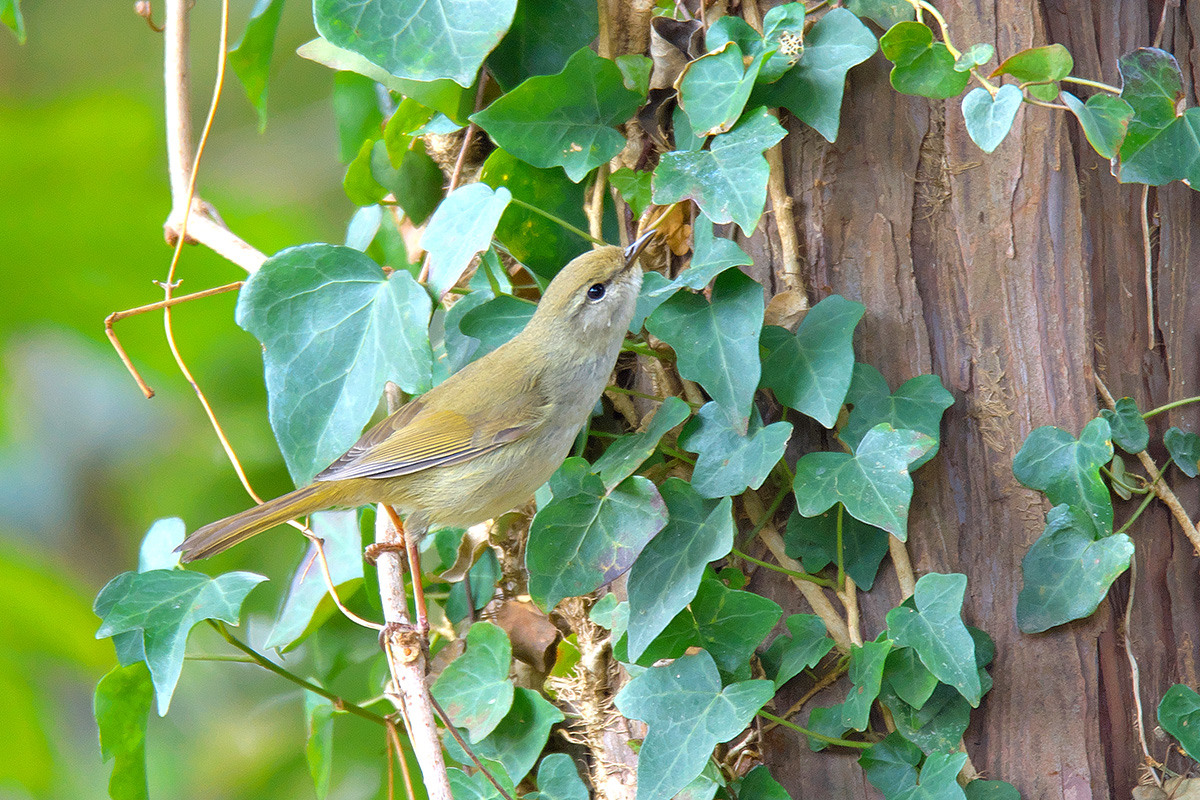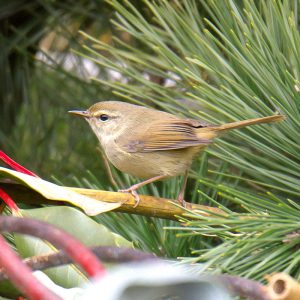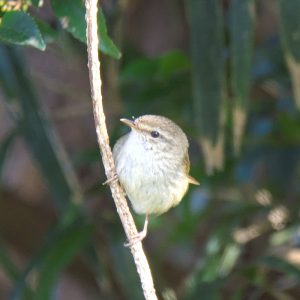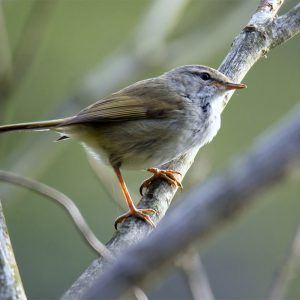むなかたが集まる
電子データベース
電子データベース
ウグイス

| 種目 | ウグイス (鶯) | 分類 |
スズメ目 ウグイス科 ウグイス属 |
学名 | Cettia diphone | 英名 | Japanese Bush Wabler |
|---|---|---|---|---|---|---|---|
|
ウグイス (鶯) |
スズメ目 ウグイス科 ウグイス属 |
Cettia diphone | Japanese Bush Wabler |
宗像市でみられる場所・時期
宗像では留鳥で,一年中観察できる。繁殖もしている。繁殖期には,「ホーホケキョ」などと聴きなしされる声で梢などで囀るため,姿を見かけることが多いが,冬期は「チャッチャッ」などと地味な地鳴きで藪の中を動き回るので姿を見付けることはなかなかできない。
特徴
全長14㎝から16㎝。雄はスズメより大きく,雌はスズメより小さい。雌雄ほぼ同色である。
額から体上面は緑灰褐色で,眉斑,腮から喉,頬は淡褐色。頬には黒褐色の細かい斑があり,過眼線は黒褐色となる。胸以下の下面は淡色で脇は褐色の傾向が強い。嘴は黒褐色で,下嘴基部は肉褐色となる。雄の跗蹠はやや長く太いが雌ではやや短くて細くなる。
習性
平地から山地の林,ササ類や灌木の多い高原,市街地の藪や植栽の多い公園,庭などを好んで生活する。繁殖期以外は一羽で生活するが,春秋には小群で移動する。藪などを渡り歩いて昆虫類やクモ類を食べる。
囀りは「ホーホケキョ」,地鳴きは「チャッチャッ」である。
分布
日本固有種で,樺太南部,千島列島南部から北海道,東北,甲信越では夏鳥で,その他の国内では留鳥となる。
その他
春告げ鳥として古くから親しまれている。囀りは「ウグイスの谷渡り」としても知られている。しかし,ウグイスの囀りを知らない人はほぼいないが,ウグイスをきちんと認識できる人は少ない。メジロとウグイスを混同する人が多いので,注意を要する。また,日本画では「梅に鶯」という取り合わせが有名だが,葉のない枝に鶯がとまることはほぼない。メジロは梅の花蜜をよく吸うので,メジロとウグイスの混同が生じる一因となっている。
 はじめに
はじめに お問い合わせ
お問い合わせ

